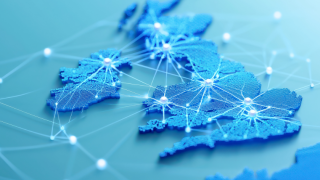NB-IoT is a low power wide area network (LPWAN) technology standard focusing on indoor coverage, offering low costs and long battery life, and connecting a large number of devices, making it central to the Internet of Things (IoT).
The solution Telia and Huawei have developed is aimed at making irrigation systems more efficient and accurate for the agriculture industry. It was developed in partnership with Norwegian firm 7Sense, and includes a mounted sensor that detects the position of a water irrigator using GPS, and uses other sensors to update on the operating status of the system.
It is connected to a mobile network through a NB-IoT module that uploads data at regular intervals, and is the first of its kind, according to Huawei.
President of Huawei’s Telia business unit Zhou Xinmou said: “What we witnessed today is only the beginning of the IoT era in Norway, where sensors are being used to connect society. As a strategic partner of the world’s leading telecom companies like Telia Norway, Huawei will continue to help operators build IoT solutions that will expand their business and make our world more connected.”
Norway has one of the highest penetration levels of machine-to-machine (M2M) connectivity worldwide. M2M is the communication between devices and plays a key role in IoT.
The country also has higher than average labour costs, increasing demand for more automated services, and the need for IoT solutions.
Telia Norway CEO Abraham Foss said the rollout is the beginning of an acceleration of deployment of IoT technology across public (parking, utility and metering), consumers (wearable, tracking) and for industrial (agriculture, logistics, transportation, and manufacturing) sectors.
“This is the start of the rollout of a technology that represents a new industrial revolution. It also marks the beginning of a journey where Telia moves from being a pure mobile operator to becoming a modern technology company and a digital enabler in society,” Foss added.




